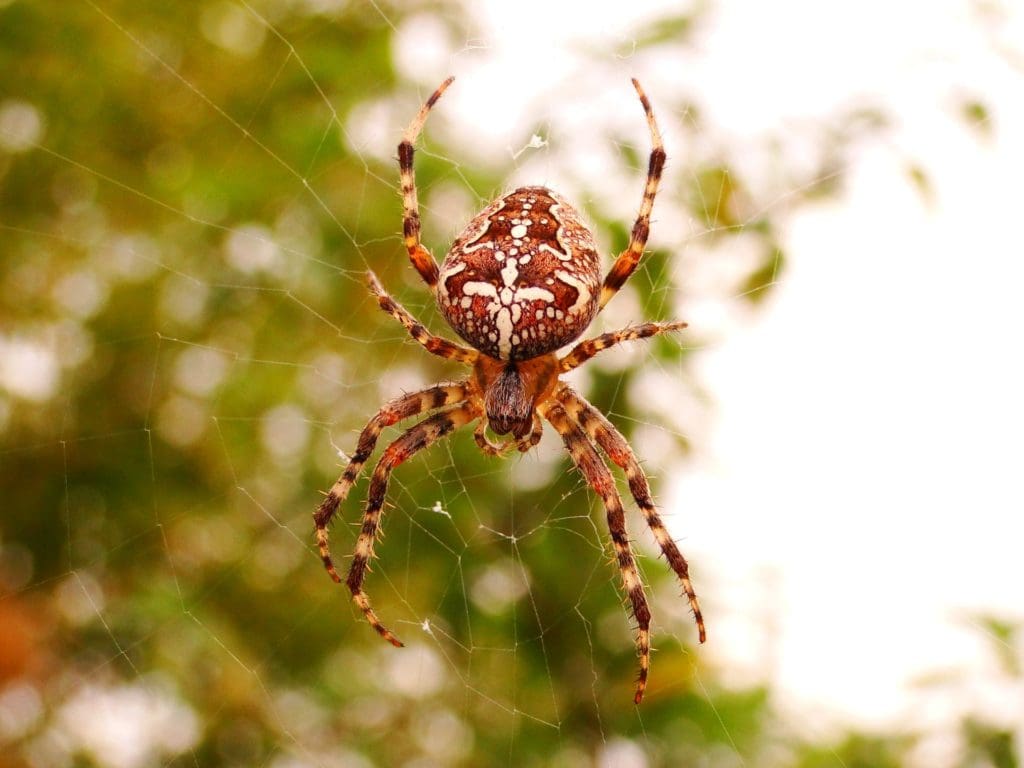Written by Jess Johnsrud, Education Coordinator; photo from Wikipedia

Late this summer, I made an unlikely friend whom I named Gladys. She lived on my porch and never said a word, yet once I noticed her, I looked forward to our daily encounters. She would spend her days tucked under the ceiling of the porch near one of the pillars. Each day as the sun set, she would quietly emerge. She was eye-catching with her elegant legs and beautiful brown marbling on her body with a white cross on the back of her abdomen. This new neighbor was a Cross Orbweaver spider, and she was magnificent.
About one fourth of all spiders in the world are in the orbweaver family. They have eight eyes and most are amazing architects, building the classic round web consisting of several circles with “spokes” leading out from the center (think Charlotte’s Web). They often eat prey larger than they are, as long as the meal gets caught in the web. Orbweavers paralyze their prey by injecting a toxin from their fangs and then wrap it up in silk to eat at a later time.
I know not everyone likes spiders, but I enjoyed Gladys. She kept to herself and was an expert at capturing and eating pesky mosquitoes, gnats and other insects that frequented my porch. Her web was impressive, running from the underside of the porch roof to the ledge, spanning about 4 feet. Once it was dark, she would crawl to the center of her web and hang upside down. Here she’d wait patiently for her next meal.
I looked for her each morning when leaving for work and watched for her in the evenings when she was just starting the night shift. I appreciated that Gladys was earth conscious and into recycling. She would periodically eat her old web in the morning and then reconstruct it later that evening.
As the nights got cooler and October was right around the corner, I knew her time with us was running out. She would be preparing for the next generation, laying up to 800 eggs in a silken sac and tucking it away from view. Once spring arrives, the eggs will hatch into baby spiders, called spiderlings. Sure enough, the night of October 2nd was the last time I saw Gladys.
Cross Orbweavers are native to Europe and traveled to the United States through human transport. There are several native orbweaver species in Wisconsin including the Shamrock Orbweaver and Banded Garden Spider. Observing Gladys each day prompted me to learn more about orbweavers and it expanded my appreciation for spiders. I look forward to spring to see if any of her offspring decide my porch is a suitable home.
